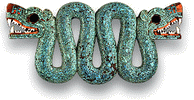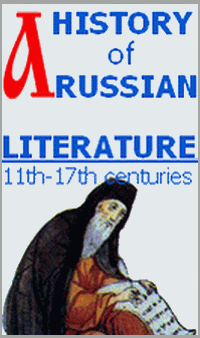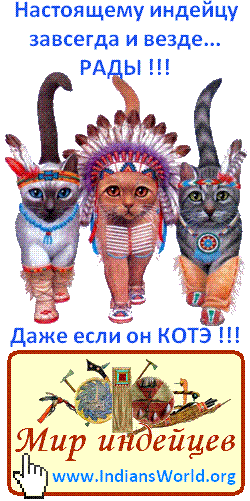General information on the history of the Maya. Formation and Teotihuacan influence
Category: Maya In ancient time there were various groups of maya that have a common historical tradition. In this regard, the characteristics of their cultures were similar, the physical features matched, and they spoke the languages belonging to the same linguistic branch.
In ancient time there were various groups of maya that have a common historical tradition. In this regard, the characteristics of their cultures were similar, the physical features matched, and they spoke the languages belonging to the same linguistic branch.
By the studies of the Mayan language was concluded that roughly about 2500-2000 BC in the area of modern Huehuetenango (Guatemala) there was a group of proto maya whose members speak the same language, also called investigators proto maya. Over time, this language was divided into various Mayan languages. Subsequently, the speakers of these languages have emigrated and settled in different areas, which later formed the Maya area and there was a high culture.
Population migration has led to a distancing of different groups, and to converge them with other cultures. This has generated a number of different theories as to what place could be called the cradle of Mayan culture. For some researchers are north and south of Veracruz, Tabasco, a place where groups of Mayan contact with the Olmecs. The second theory is inclined to think that this culture originated in the mountains of Guatemala, where was formed an agricultural society, which grow corn and also experienced the impact of culture Olmec. Olmec culture is believed to be a mother culture because it originated the elements that formed the basis for the development of other major cultures of Mesoamerica.
Periods of Maya culture is similar to the chronology of all of Mesoamerica, although more accurate due to time deciphering hieroglyphs and their comparison with the modern calendar.
Mayan civilization was at the Mexican Yucatan peninsula and at mountains of Guatemala. In Maya area have developed three major linguistic groups: the Yucatec, Tzeltal, and quiche. At the beginning of 1000 AD Quiche were the most powerful union of the Mayan tribes. Mayan tribes began their development about the 2nd millennium BC. It was a period in Maya history, which is now called archaic. During this period, the Yucatan and adjacent areas have replaced each other two cultures – “Ocos” and “Cuadros”, while there were fine ceramics, pottery surface was covered with stamped pattern of the bands that created with the help of agave fibers. Of that time archeologists found stone Metate and mano, ceramic sinkers.
The history of Maya starts in period from 500 BC through 300 AD – Mayan culture begins its formation. This is especially noticeable on the clay humanoid figurines, where there are physical characteristics of the population of that era. Sample are also ornaments, decorating first buildings of Maya. In that period in the southern regions of Guatemala begins to appear larger cult centers. Rapidly evolving Izapa on the Pacific coast and mountain region of Guatemala. In the Late Archaic period appears Kaminaljuyu – an ancient center of Mayan culture, not far from the Ciudad de Guatemala. At the end of phase “Mam” in Petén there are small settlements Uaxactun and Tikal. In Izapa develops the Maya religion, and it is now different from the primitive beliefs. There is the image of the night deity and the deity of rain, later known as Chac, “long lip god.” In Izapa were found a huge number of stelae depicting that deity.
Sure, izapa culture became the harbinger of the future greatness of the Maya. Her artistic styles were used as the foundation of the Mayan civilization. What appeared originally in the Izapa, later were spread over a vast area – Yucatan, Peten and east of Mexico.
At this time in Guatemala, emerges culture of “Miraflores”, and it is likely that Izapa become a military adversary of Kaminaljuyu. To the north at that same time there was a contact of the Olmec and Mayan cultures. By 1st century AD all traces of the Olmec culture completely disappeared, the decline of which began three centuries earlier.
In the early pre-classical period the Mayan society were made up of families, united by one language, customs and territory. They combined for soil cultivation and fishing, hunting and gathering the food production for survival. Later, with the development of agriculture, irrigation systems were built and expanded the range of crops, some of which was already on sale. Accelerated the population growth, the construction of cities and large ceremonial centers.
From Pre-Classical period, the Maya began to build separate facilities, in which is guessed influence of other cultures. Later, Maya architecture became to express the mystical and religious ideas, so in the inner cities were built temples and palaces, courts for ball games, and residential buildings were located in the vicinity.
250 AD. Start of early classical period. In this year of Teotihuacan and Kaminaljuyu emerging trading alliance with Tikal. In 400 AD Kaminaljuyu completely falls under the authority of Teotihuacan merchants pochteka – people of teotihuacan come into the city and in its place construct a miniature copy of his capital, which became a south-eastern outpost of the empire. Thus was born the culture of Esperanza, which gave impetus to the development of all States of the Mayans. Teotihuacan traditions enrich the culture of “Miraflores”.
During the phase of “Esperanza” a mountainous region of the Maya is under the protectorate of Teotihuacan dynasties and of course under the influence of Teotihuacan art styles. Then, to the north of Kaminalhuyu begins to be erected first cyclopean structures of the Maya, which served as the mausoleums of the Teotihuacan “governors” – pochteka. The hallmark of this stage is the fine Orange ceramics. It is covered with geometric designs, obviously by Teotihuacan origin. At this period appears tripod vessels. These products were distributed and popular in central Mexico. Later, when the Teotihuacan hegemony in the lands of the Maya is completed, the stage of “Esperanza” transfers to no less significant stage in the history of the Maya – tzakol. During the phase “tzakol” influence of the culture of Teotihuacan on the mountainous region of Peten Maya is still strong. Tikal becomes a protectorate of Teotihuacan. Throughout the Peten Teotihuacan spread the cult of the gods, such as Tlaloc. It sees similarities with the Maya god of rain, Chaac, one of the major deities of the Maya pantheon.
Meanwhile in the Yucatan North there was not found any influence of Teotihuacan. In Yucatan is developing a completely original Mayan culture. During this period, when the south was under the rule of Teotihuacan, north also begins to evolve rapidly. In Northern Petén starts to appear one after the other major religious and culture centers. And although the influence of Teotihuacan to the north of the Yucatan is not very large, at the settlement Acanceh there were found many steles depicting Tlaloc. By sunset of the phase “Esperanza” in the western regions of El Salvador and Honduras, appears a mysterious culture “kotzumalhuapa, whose foundations were laid by Pipil tribes – the descendants of Teotihuacan conquerors. This nation was the most susceptible to the Teotihuacan culture. They have adopted their beliefs and art. In the settlement of this stage can be seen images of Tlaloc, Quetzalcoatl, illustrations to Teotihuacan myths, art motifs, prevalent in Teotihuacan.
3 centuries earlier the fall of Teotihuacan, about 300 AD, influence of the city in the lands of the Maya empire falls.


